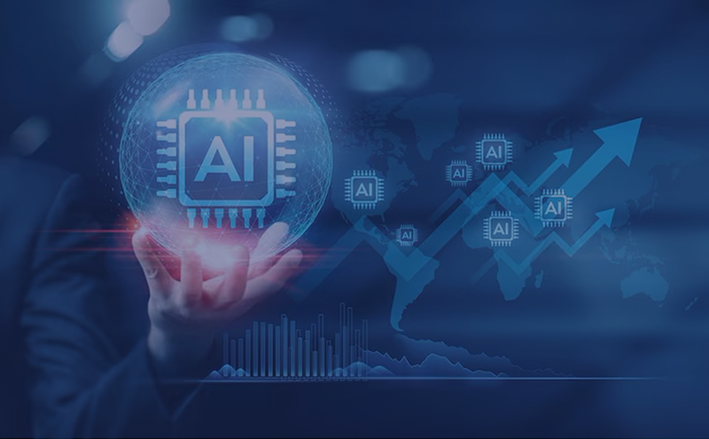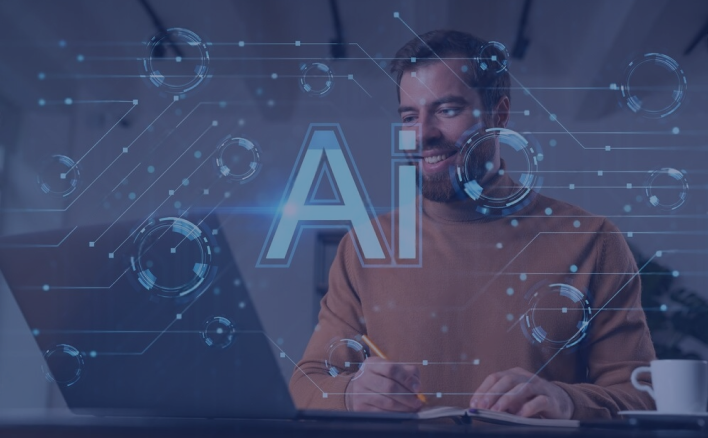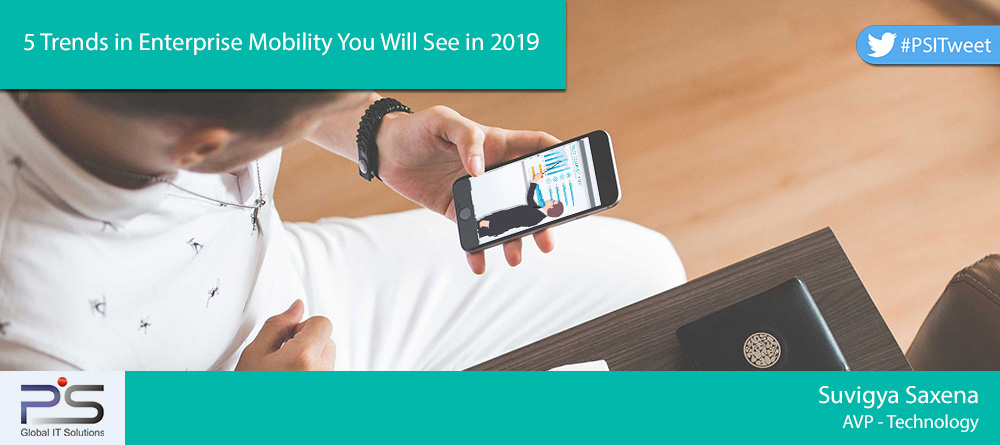
Enterprise mobility has evolved into an essential function that not only supports but accelerates the growth of an organization. In fact, it is a trend that is becoming one of the top priorities for bigger organizations especially for both customer engagement and workforce mobilization. It is a trend that has caught up with a small, medium, and big organizations alike.
What does Enterprise Mobility mean in 2019?

True to the promises offered during its nascent stages, enterprise mobility has evolved way beyond mobile devices and mobile workers. A recent report stated that the market size of BYOD [Bring Your Own Device] and mobile enterprise will grow at a CAGR of 15% for the next 5 years. At the crux of this massive growth rate is the upcoming 5G. 5G technology is expected to make mobile corporate data-centric to all enterprise mobility strategies. Moreover, the latest trends also suggest that Asia-Pacific markets will outpace others in terms of leveraging the various benefits of the fast-growing BYOD culture.
The efficiency of enterprise mobility is expected to drive business and employee demand for more mobile-first solutions in 2019 and beyond. The latest trend in the industry indicate a visible shift to 5G, AI, IoT, UEM (Unified Endpoint Management), EMM (Enterprise Mobility Management), and Managed Mobility Services. Furthermore, the next five years will also witness increased spending by enterprises on MTD (Mobile Threat Defense). The process of adopting these concepts will also become much less complicated than they are currently.
What Do the Latest Enterprise Mobility Trends in 2019 indicate?
It isn’t an easy task to make predictions on the development and expansion of an industry. But there are specific trends which offer a more detailed view of the future than the others. Let’s take a look at some of the top enterprise mobility trends and try to figure out where the mobility landscape is heading towards.
#1. IoT Driving Mobility
Internet of Things refers to a large number of connected things, in which “things” also include human beings. Enterprise adoption of IoT and its implementation is happening at an exponential rate. It is predicted that the IoT market will reach $1.1 trillion by 2026. As per Gartner, there are currently over 14.2 Billion active IoT devices, and the number is expected to reach 25 Billion by 2025.
Another visible trend is that IoT integration costs are much lower than they used to be a few years ago. The extent of smartphone penetration has also skyrocketed with the cost of technology plummeting with every passing day. And these things are creating an ideal condition for IoT growth.
Even though the actual size and potential of the IoT market are often overestimated, it is difficult to underestimate its potential in various lines of business. IoT enables enterprises, governments, and individuals to connect and control internet-enabled devices in different areas such as manufacturing, energy, transportation, and more.
The latest trend predicts a growing dependence on IoT for business decision making. IoT based information gathering will form the crux of future enterprise mobility programs.
#2. Location-Based Business Apps
The number of business apps being imported on mobile devices is increasing, liberating users from the limitations of using a desktop or a laptop. 2019 is likely to see further advancements in business app development. So just like consumer apps, there will be apps created solely for businesses.
The loading time, retention, and conversion rate for business apps are also expected to improve, fueled primarily by cross-development frameworks like Progressive Web Apps (PWAs) and Xamarin. Other advancements include offline services on mobile apps, even with weak network connectivity.
Moreover, employees today use many devices to get work done from different places. Therefore, there will be enterprise apps for various platforms supporting different operating systems to streamline work. For example, these apps can notify an employee about the day’s meeting schedules as soon as they step into the workplace. The upcoming trend may also see mobile apps interacting with the device’s microphone, camera, and other aspects in new ways.
RTLS (Real-time Location Systems) and IoT are expected to be used in combination in the coming year, and the trend is likely to grow stronger in the years ahead. RTLS and IoT are together going to make operations smoother, and real-time asset management will no longer be wishful thinking.
RTLS will also be used to enhance the augmented reality experience. AR and RTLS will be combined on a much bigger scale to provide value to the businesses and customers. The trend has already begun with airports and hospitals leveraging the use of BLE Beacons, combined RTLS, and Wi-Fi to find a way through their extensive and challenging to navigate spaces.
#3. Artificial Intelligence to Take Center Stage

The AI revolution has already begun, and its disruptive impact is being felt across industries. Almost any form of technology we use today will carry an AI stamp on it in the future.
This is already visible in the enterprise mobility landscape where AI-inspired features like GPS systems that detect the user’s location, a compass that identifies the device orientation or an AI assistant that takes care of a multitude of functions, are becoming integral to enterprise apps.
Artificial intelligence can be defined as applications designed to interact with humans and take actions based on those interactions. Following years are very likely to see the realization of AI’s potential in enterprise mobility. It will free up employees’ time so they can concentrate on tasks that require a manual touch.
A large number of companies have already started relying heavily on technology led by the rapid adoption of AI. However, there will also be security concerns around it, for, in case of a failure in the system, it may lead to a security threat to the entire enterprise.
#4. A Rapid Adoption of Cloud Computing
Cloud-based technologies have been gaining importance as an enterprise solution for several reasons. These include growing sophistication in cloud services and its easy availability, reliability, and affordability. Moreover, the groundbreaking potential of big data is driving enterprise cloud migration like never before.
Although there is no doubt that cloud computing is reaching new heights with every passing year, the security issues related to it is still a cause of concern to the enterprises. However, several companies are trying to deal with these security issues by hosting mission-critical applications on the premise or other app solutions on the cloud. The increasing security challenges indicate a future with regulatory security controls.
#5. A Further Boost to the Bring-Your-Own-Device Trend
The corporate world has adopted the bring-your-own-device culture with great effectiveness. The increased mobility offers a high level of efficiency and productivity. This has contributed to making BYOD more than only a trend. It is now transforming into a regular workplace norm, and more and more companies are shifting towards this practice.
Further, enhanced and feature-rich Mobile Device Management or MDM solution are helping overcome issues and concerns related to enterprise network and data security. As per a report, the global enterprise security market is growing at a CAGR of 33.8% and will reach $9.98 Billion by 2024.
Final Words
Enterprise mobility was a primary focus of IT investments in 2019, and the trend is expected to continue in the future too. However, some of these trends, as mentioned above, will bring new challenges related to enterprise information and data security. Hence, it is must that enterprise have a contingency plan for unforeseen problems. Are you also looking for smart and effective enterprise mobility solutions? Pratham Software is one of the leading enterprise mobility solution providers. Our expertise and experience have helped enterprises overcome challenges of all scale and sizes. Contact us now to find out more about our enterprise mobility consulting and management services.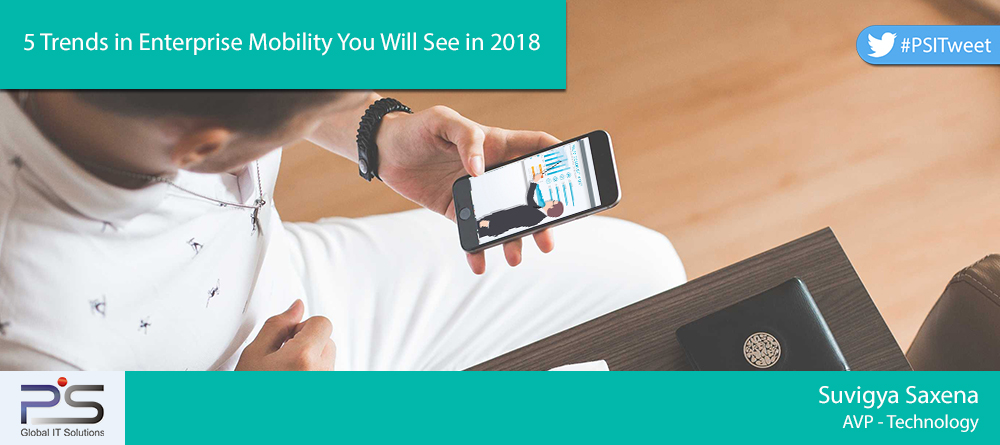 Enterprise mobility is evolving into an essential function that supports the growth of an organization. In fact, it is a trend that is becoming one of the top priorities for bigger organizations especially for both customer engagement and workforce mobilization.
Enterprise mobility is evolving into an essential function that supports the growth of an organization. In fact, it is a trend that is becoming one of the top priorities for bigger organizations especially for both customer engagement and workforce mobilization.
Enterprise mobility means not only mobile devices and mobile workers, but also mobile corporate data. Enterprise mobility has the capacity of improving the productivity and efficiency of employees and driving a greater ROI. A recent report stated that the market size of BYOD [Bring Your Own Device] and mobile enterprise will see a massive growth by 2021. It has been estimated to reach a whopping figure of $73.30 billion by 2021 from $35.10 billion in 2016.
The efficiency of enterprise mobility led both businesses and employees to demand for more mobile-first solutions. The ongoing trend in the industry indicates that Enterprise Mobility Management, Internet of Things, and Managed Mobility Services are going to become more common ideas. The process of adopting these concepts will also become much less complex than it is currently.
It isn’t an easy task to make predictions on the development and expansion of an industry. But this post will help you learn about the top five trends in enterprise mobility that you can expect in 2018.
#1. IoT Growth to Continue
Internet of Things refer to a large number of connected things, in which “things” also include human beings. Enterprise adoption of IoT and its implementation is happening at an exponential rate. In fact it is predicted that the total number of IoT devices are likely to surpass mobile phones worldwide by 2018 as the largest group of connected devices. And by 2021, there will be 7.7 billion mobile broadband subscriptions, 9 billion mobile subscriptions, and 6.3 billion smartphone subscriptions.
The connection costs are declining as broadband internet is becoming more widely available and the number of devices supporting Wi-Fi increasing. The extent of smartphone penetration has also skyrocketed with the cost of technology plummeting with every passing day. And these things are creating an ideal condition for the IoT growth.
Even though the actual size and potential of the IoT market is often over-estimated, it is difficult to underestimate its potential in different lines of business. IoT enables enterprises, governments and individuals to connect and control IoT devices in different areas such as manufacturing, energy, transportation and more.
The upcoming trend in 2018 will see businesses depending largely on IoT devices for data and information collection to base important business decisions on. IoT will have a strong influence on enterprise mobility programs. And the future of mobility programming [from the devices employed to the programs launched] will be determined by employee usage.
#2. Location Based Business Apps
There is a growing number of business apps being imported on mobile devices, liberating users from the limitations of using a desktop or a laptop. 2018 is likely to see further advancements in business app development. So just like consumer apps, there will be apps created solely for the purpose of business.
The loading time is also expected to improve regardless of network connectivity. Other advancements include mobile apps designed to serve users even when they are not using the app. This means, that the app will update itself in the background if connected to a network when the user is not using it.
Moreover, employees today use many devices to get work done from different places. Therefore, there will be enterprise apps for different platforms supporting different operating systems to streamline work. For example, these apps can notify an employee about the day’s meeting schedules as soon as they step into the workplace.
For example, City Hour is a location-based business-social application which enables users to connect with other business professionals based on the location and other similar aspects.
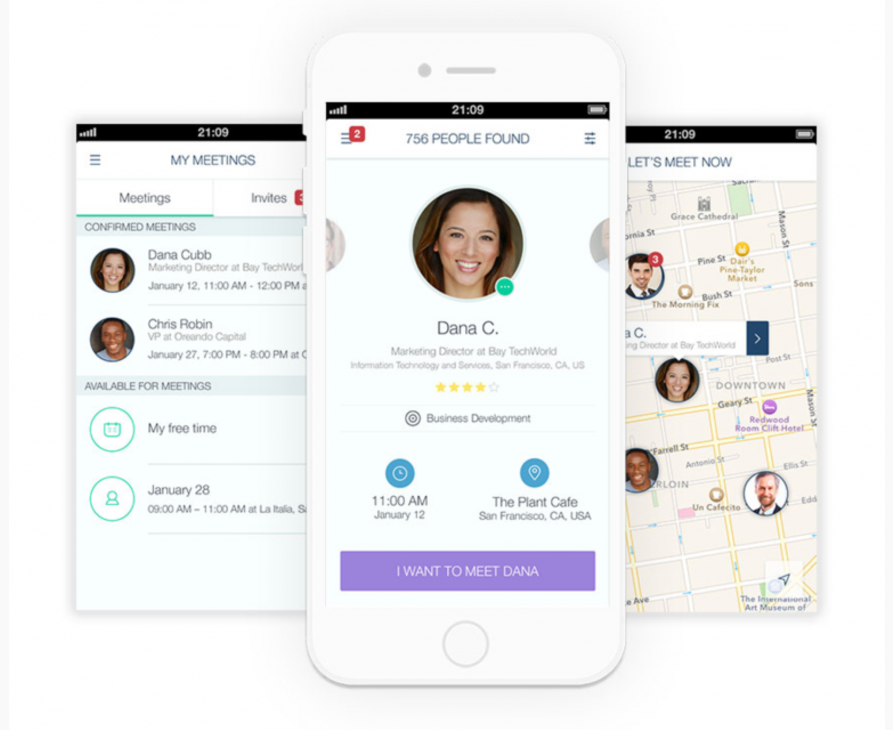
Image Source: Technology.org
The upcoming trend may also see mobile apps interacting with the device’s microphone, camera, and its other aspects in new ways.
RTLS and IoT is expected to be used in combination in the coming year and the trend is likely to grow stronger in the years ahead. RTLS and Iot are together going to make operations smoother and real-time asset management will no longer be a wishful thinking.
RTLS will also be used to enhance augmented reality experience which will create a more immersive experience. AR and RTLS will be combined on a much bigger scale in order to provide value to the businesses and customers. In fact, the trend has already begun with airports and hospitals leveraging the use of BLE Beacons, combined RTLS and wi-fi to help find way through their large and difficult to navigate spaces.
#3. Artificial Intelligence to Prevail
Artificial intelligence is becoming more widespread in the field of computing. Smartphones have become a go-to solution to increase work efficiency of an employee. And we can seen new smartphone features coming up to improve the functionality of the new mobile devices. These features include GPS systems that detect the user’s location, a compass that identifies the device orientation or an AI assistant that takes care of a multitude of functions.
Artificial intelligence can be defined as applications designed to interact with humans and take actions based on those interactions. The upcoming year is very likely to see the realization of AI’s potential in enterprise mobility. It will free up employees’ time so they can concentrate on tasks that require a more manual touch.
Moreover, employees today use many devices to get work done from different places. Therefore, there will be enterprise apps for different platforms supported by different operating systems to streamline work, such as iPhone’s Siri or Microsoft’s Cortana. The following image shows the Siri interface on Apple iPad.
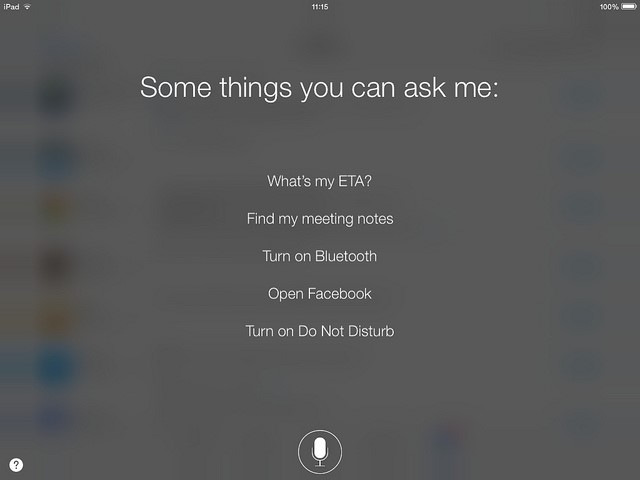
Image Source: By Kārlis Dambrāns [CC BY 2.0] via Flickr
A large number of companies have already started relying heavily on technology led by the rapid adoption of AI. However, there will also be security concerns around it, for in case of a failure in the system it may lead to a security threat to the entire enterprise.
#4. A Rapid Adoption of Cloud Computing
Cloud based technologies have been gaining importance as an enterprise solution for a number of reasons. These include the growing sophistication in cloud services and its easy availability, reliability and affordability. Moreover the groundbreaking potential with big data is driving enterprises to turn to cloud technologies.
Although there is no doubt that cloud computing is reaching new heights with every passing year, the security issues related to it is still a cause of concern to the enterprises. However, several companies are trying to deal with these security issues by hosting mission critical applications on the premise or other app solutions on the cloud. The increasing security challenges indicate a future with regulatory security controls.
#5. A Further Boost to the Bring-Your-Own-Device Trend
The corporate world has adopted the bring-your-own-device culture with great effectiveness. The increased mobility offers a high level of efficiency and productivity. This has contributed in making BYOD more than only a trend. It is now transforming into a regular workplace norm and more and more companies are shifting towards this practise.
2018 will see more enterprises integrating BYOD trend into their work culture. But this is not free from shortcomings as well. These devices brought in by the employees do not have the security features mandatory for the devices that are used within an organization’s premises. This limitation puts the IT team of that enterprise under tremendous pressure of ensuring the security of these devices, which are brought in by employees and used within the corporate premises.
Mobile Device Management or MDM solutions are used to tackle such issues resulting from the BYOD culture. If not addressed, these security issues can disrupt the workflow and hamper efficiency.
Conclusion
Enterprise mobility has been a major focus of IT investments in 2016 and 2017, and this trend is likely to continue in 2018. In fact it will be a major global market during 2017. However, some of these trends, as mentioned above, will be faced with challenges and enterprises need to come with suitable solutions to increase efficiency. This is especially true for enterprises that manage sensitive information and data through mobile devices. Therefore the next generation of apps should be able to ensure security of data, device, application and network for all usages.
Looking for smart and effective enterprise mobility solutions? Contact us now to find out more about our enterprise mobility consulting and management services.[:]

